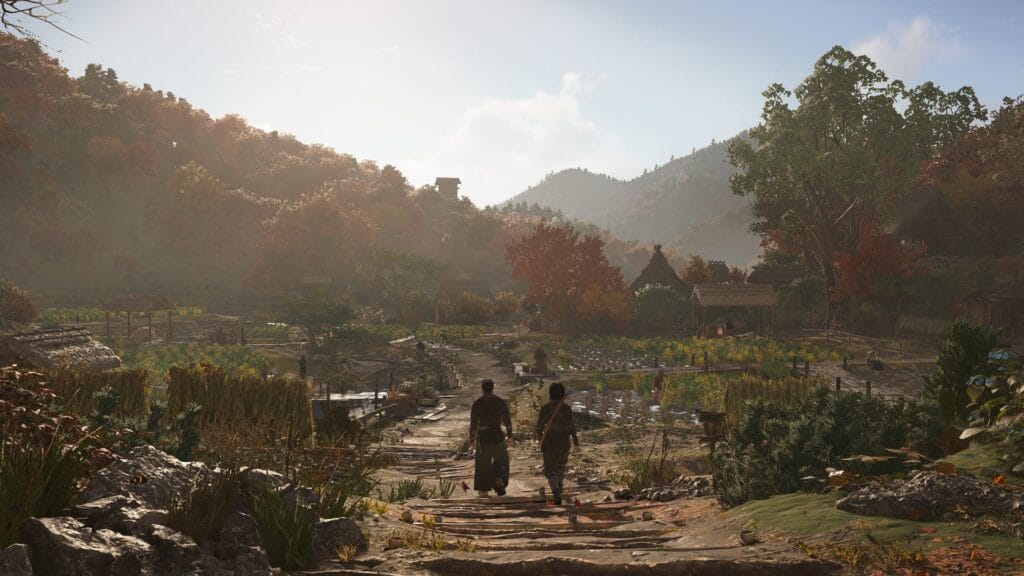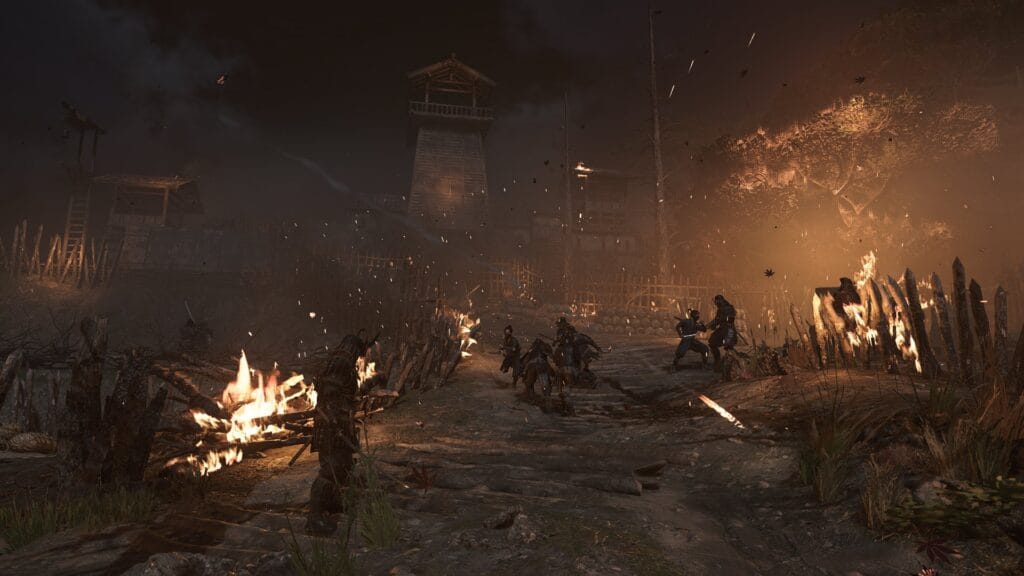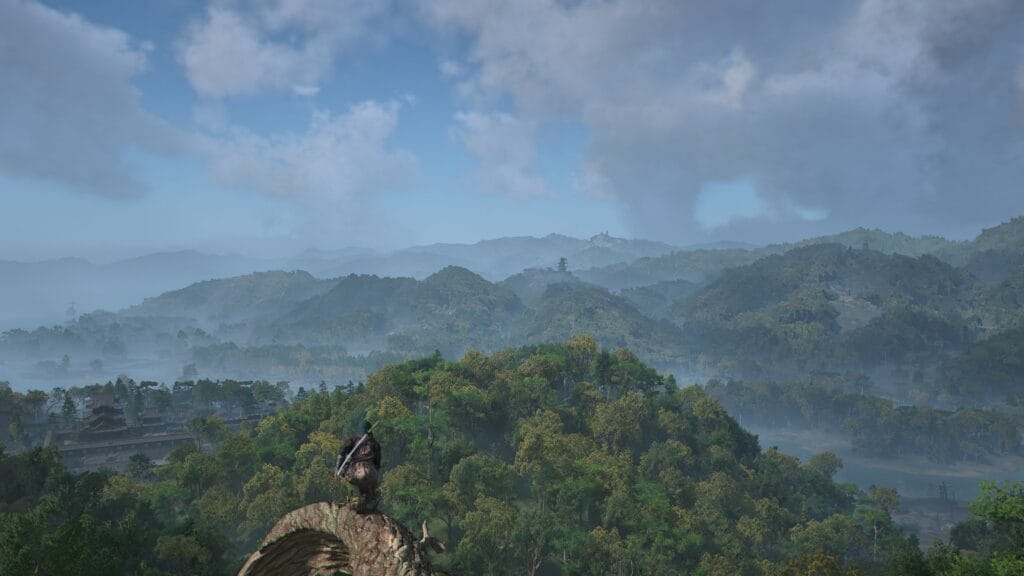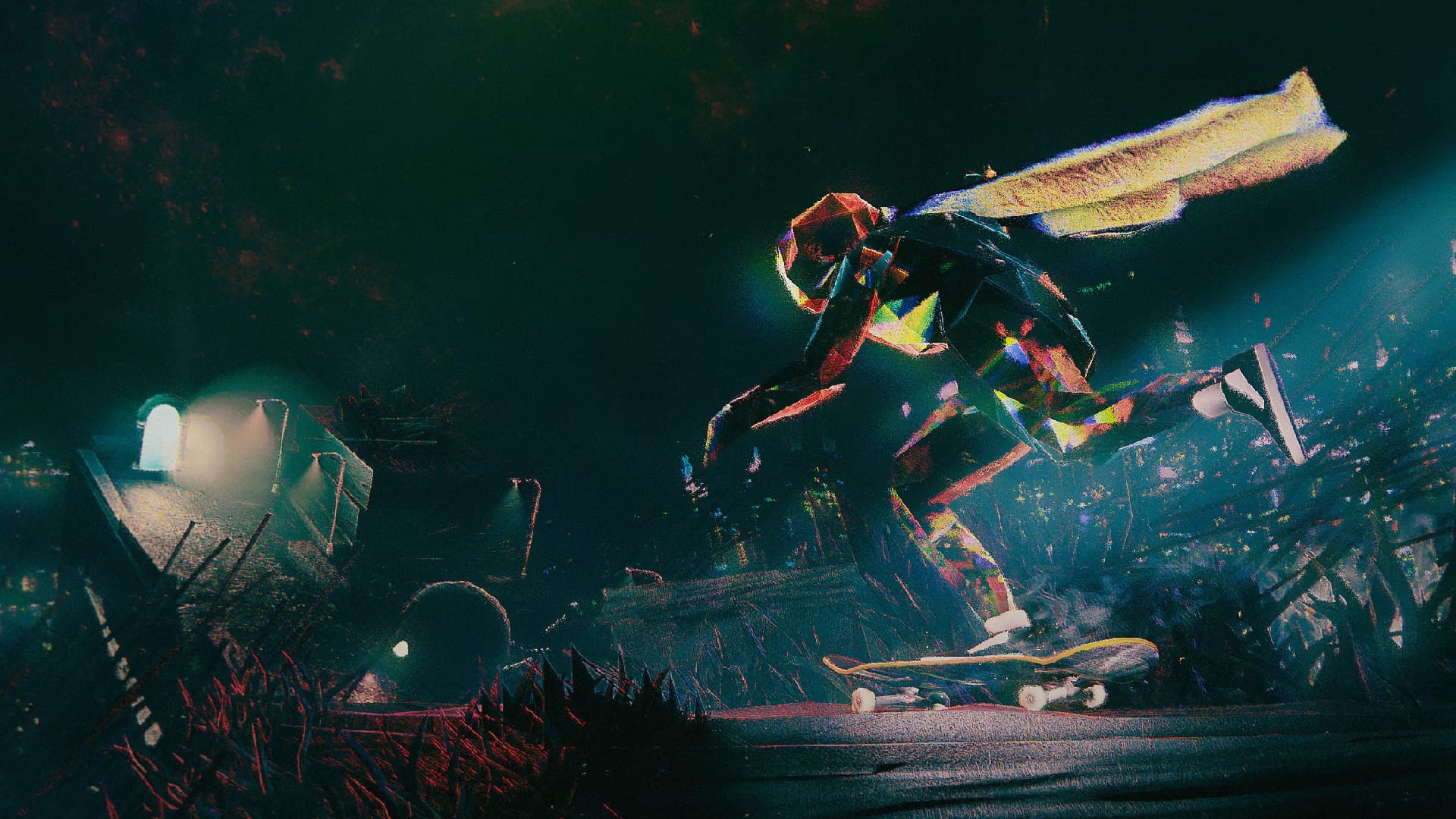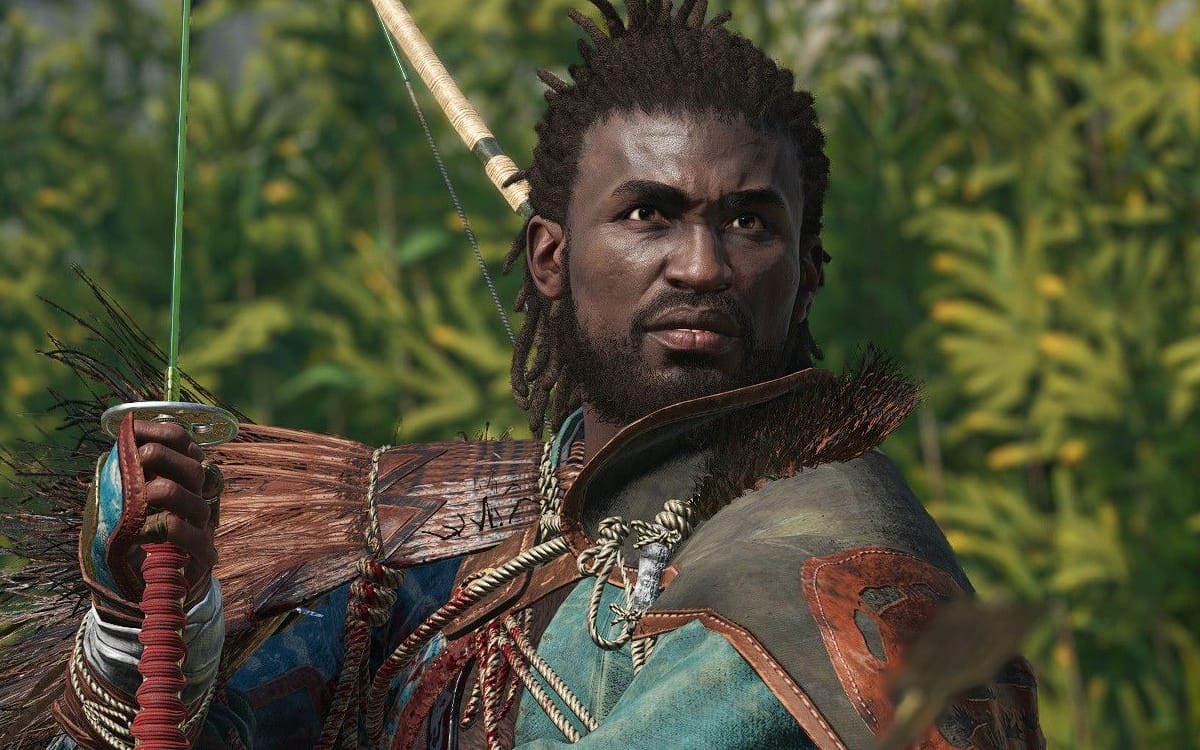Since my last review for Entertainium covered an open world, third-person action-adventure set in historical Japan, I decided to switch it up by next reviewing Assassin’s Creed Shadows: An open world, third-person action adventure set in historical Japan. This is somehow the 14th instalment in the very long-running franchise, since the original game in 2007. Over that time, the biggest pivot has probably been 2017’s Assassin’s Creed Origins, which focussed the games more into open world roleplaying model and de-emphasized the stealth, assassinations and parkour, although these elements still remained. Assassin’s Creed Odyssey and Valhalla continued in this trend while 2023’s Assassin’s Creed Mirage somewhat harkened back to the older games with a more stripped back design. Shadows is another game firmly in the mould of Origins, but with various changes and enhancements over its predecessors.
Shadows is set during the end of the Sengoku period in the late 16th Century, when various civil wars raged across Japan. This period would eventually lead to the establishment of the Tokugawa Shogunate, which would govern Japan for the next 250 years. You play as two characters; Fujibayashi Naoe, a young Igan shinobi seeking revenge for her father’s murder, and Yasuke, an black samurai and interpretation of the historical character who fought alongside Oda Nobunaga. Indeed, like other titles in the series this game is stuffed full of historical characters including Nobunaga and Hattori Hanzō among many others. The game is divided between Naoe and Yasuke, with different chapters focussing on each character. Naoe is the more traditional assassin who is affiliated with the Assassin’s Brotherhood, while Yasuke is much more of a heavy weapon; powerful but less nimble. The story at the beginning focuses more on Naoe before shifting to Yasuke later on.
The characters are good and the overall plot is enjoyable and well performed, although a little self-serious. There are some elements of levity such as Junjiro, a young boy and friend of Naoe, but for the most part the main story is told with quite a sombre gravity. There is however a great variety of missions you’ll engage in, particularly with regards to the different assassinations you’ll need to undertake, tracking down the large cadre of Naoe’s father’s killers and the mysterious box they stole. An early example involves taking part in a Japanese Tea Ceremony, or another tracking down an ornamental teppō, an early Japanese firearm. The side missions also mostly feel properly fleshed out; there are some more throwaway ones but many will evolve into self-contained mysteries in their own right, with their own assassination targets.
The game world is a condensed version of central Japan, centred on the regions around the cities of Osaka and Kyoto. It’s a sprawling, huge area and is pretty much fully explorable, even though much of it is heavily forested mountains. You get your own base as a little self-contained zone set in a secluded glade, and a new element is slowly upgrading your hideout, not only unlocking new buildings and upgrades, but literally being able to decide on their placement and layout. The interface for doing so is somewhat clunky but easy to get the hang of, a bit like a stripped down version of The Sims Buy Mode. You’re also incentivized for petting various dogs and cats you find in cities and villages, because any animal you’ve stroked can then be unlocked to also reside in your base.
Furthermore, the seasons have also been fully modelled. After a certain amount of in-game time or via triggering it yourself, the season will move forward, the entire landscape changing to reflect the new weather and time of year. In high summer the fields are lush and the trees are green; in winter the world is blanketed in snow and the wind is blustery. Aside from looking good, this also serves several gameplay benefits; your scouts, which enable you to track down intel on assassination targets are refreshed, supplies are restocked and more resources for your base are acquired. Exploration mode, first introduced in Odyssey, makes a return, not always giving you a direct quest marker and instead expecting you to use the world to find locations or characters naturally.
The combat has again been tweaked; it’s very similar to recent games in the franchise but does feel a bit more snappy and streamlined. Your primary attack is combined with a number of special abilities you can unleash on a cooldown, while you’ll also want to block and dodge, with certain enemy attacks being unblockable. Successful blocks and dodges expose your opponent for a counter attack, and so on. Compared to the combat of Rise of the Ronin it’s much simplified, but it does feel enjoyable and looks extremely cool as you slice and dice your way through bandits and soldiers. When you remember how clunky the combat originally was in this franchise, it has certainly come a long way.
The stealth though is where a lot of changes have come, notably adding a few concepts from Ubisoft’s other stealth series, Splinter Cell. Where your character stands and sources of light now matter a lot more: When standing exposed you’ll be a lot more easily spotted, while lurking in the shadows or in tall grass, you’re almost invisible. You can extinguish various light sources to make progress easier, and you’ll need to move slowly across Nightingale floors to prevent you from alerting the guards. Similarly, you can now go prone, scrambling along the ground on your stomach, which reminded me a lot of Metal Gear Solid V: The Phantom Pain. Indeed, the ability to raid castles and tag supplies for extraction by your scouts later feels analogous to extracting resources via fulton in MGSV. Throwing knives or shuriken can silently take out foes from a distance, while you can also assassinate people through shoji screens and doors, which is always satisfying. Finally, the grappling hook is fantastic for being able to easily scale cliffs or overhanging roofs, augmenting your existing parkour abilities.
Eagle vision, which was present in Origins, Odyssey and Valhalla and gave you a bird’s eye view for scouting encampments, has been changed. It no longer gives you a bird companion eye in the sky, but instead desaturates the world and allows you a version of Dishonored’s Dark Vision ability, being able to see enemies as outlines through walls. You can tag enemies from a distance, which makes it easier to plan your path through a fortress or sanctuary, taking out guards silently without raising a wider alarm. Some enemies are stronger and can’t be instantly one-hit assassinated due to their armour, although you can upgrade your weapons and equipment to make tackling stronger samurai daimyo easier. The gear and weapons system is essentially the same as previous recent instalments, thankfully not overwhelming you with loot but getting a regular drip feed of various items from chests and looted from high level enemies.
Graphically the game is thoroughly gorgeous and the PC version is very solid. The cherry blossom trees festoon the landscape with their swirling petals, the Japanese architecture contrasting between simple peasant houses and the giant stone walls of Osaka Castle. Character models likewise look excellent. Although my old Nvidia 2070 Super is getting rather long in the tooth, the game ran very well at medium settings, regularly hitting a solid 60fps. Cranking it up to high settings did result in a lot of dips into the 40s and 30s, and so anyone looking to having all of the ray-tracing turned up will need to be sure they have an adequately strong graphics card. I encountered essentially zero bugs apart from minor animation oddities; unquestionably this feels like one of the best optimized Ubisoft titles in quite a while.
Assassin’s Creed Shadows is certainly the finest Assassin’s Creed game since Origins, but whether it does enough to fully reinvigorate the franchise going forward, I’m genuinely uncertain. The combined resources of seemingly every Ubisoft studio have contributed towards it, with the very future of the publisher almost riding on its success. All of the new and tweaked elements feel like evolutionary rather than revolutionary steps, sticking fairly closely to the Origins formula when it comes to the core gameplay loop and game systems. It’s ultimately a more polished and honed sequel to Origins, more so than the more sprawling Odyssey or Valhalla were. For those who have enjoyed Odyssey or Valhalla, Shadows will feel very familiar, perhaps a little too familiar. If you haven’t picked up an Assassin’s Creed game in a few years though, Assassin’s Creed Shadows is a welcome return to form.


